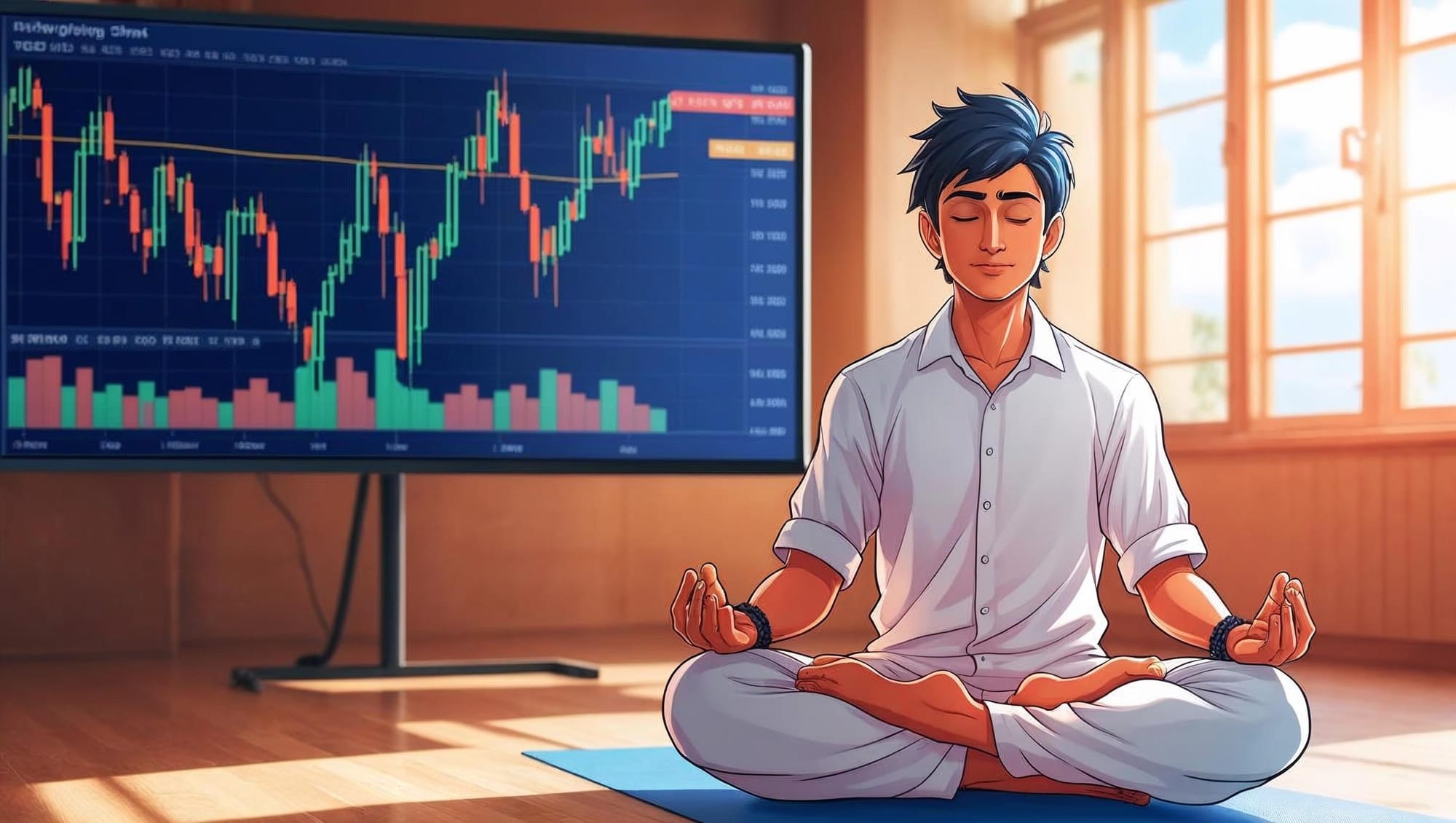Think Like a Pro: 12 Mindset Rules for Crypto Traders

Mastering the Mental Game of Crypto Trading: From Practices to Processes
Trading Isn’t About Charts—It’s About Consistency Under Pressure
In the world of crypto, price movements are extreme, market hours are infinite, and emotions run wild. Where traditional finance holds some semblance of structure, crypto is chaos—a global, always-on arena where wealth can be made or lost in hours. And while most traders obsess over technical indicators, market trends, and influencer tweets, the truth is, none of that matters without psychological discipline.
The market does not reward those who merely understand it. It rewards those who can operate effectively within it—especially under pressure. And the deeper you go into trading, the more obvious it becomes: your decisions are not driven by strategy alone. They’re driven by your ability to manage your mental state. Every moment in the market is a psychological event. And every trade, whether conscious or impulsive, reflects who you are at that moment.

1) Treat Trading Like a High-Performance Craft
High-performing traders treat the act of trading as a performance discipline. They don’t just sit down and gamble on green candles—they prepare for trading the way athletes prepare for a game. They cultivate habits, rituals, and routines to control their focus and reduce noise. They review themselves constantly. They understand that trading is not a purely intellectual endeavor—it’s a test of psychological endurance.
Crypto, in particular, makes this even more critical. Unlike traditional markets, crypto offers few breaks. It operates in a constant state of motion, with narratives and price action changing by the minute. That means your ability to perform consistently isn’t about having a perfect strategy—it’s about maintaining clarity and structure in an environment that encourages chaos.

2) Don’t Suppress Emotion—Learn to Use It Wisely
One of the biggest mistakes newer traders make is believing that psychological control is only about suppressing emotions. They try to eliminate fear, block out greed, or ignore the anxiety that comes when markets drop suddenly. But emotional suppression doesn’t work. In fact, it makes things worse. The key isn’t to become emotionless—it’s to become emotionally agile. The best traders aren’t the ones who feel nothing. They’re the ones who feel everything—and act with clarity anyway.
3) Best Practices Are Useless Without Repeatable Processes
The first step is to develop processes that support your psychology, not fight it. Most traders know what’s “good” for them. They’ve read about journaling, pre-trade checklists, taking breaks, and position sizing. These are what we’d call best practices. But in reality, these best practices only create results when they become systems. A good practice followed occasionally creates inconsistency. A good practice turned into a daily process creates discipline.
Take, for example, the act of journaling trades. Most traders only write down notes when something goes wrong or when they feel guilty. But those who build journaling into their daily routine—after every session, every entry and exit, every big decision—they begin to see patterns not just in the market, but in themselves.
They start to notice that they make emotional trades at certain times of day, or that losses tend to trigger more risk-taking, or that their best trades always come after a solid setup and a calm mindset. That level of awareness cannot come from memory. It only comes from process.
4) Find Your Edge by Amplifying Your Strengths
Over time, process reveals your personal trading edge. And your edge won’t look like anyone else’s. Some traders excel at spotting early narratives—before the crowd piles in. Others are sharp analysts who dissect tokenomics with precision. Some are pure price action traders. Some rely on on-chain data. What matters is that you discover your strength and build around it.
Focus on what you do well, not just on what you struggle with. In fact, doubling down on your strengths often gives better returns than trying to patch every weakness.
5) Address Weakness Through Systems, Not Willpower
Of course, that doesn’t mean you ignore your blind spots. Emotional impulses, FOMO, revenge trading, panic selling—these must be confronted. But they’re best addressed not through shame or suppression, but through structured systems.
For example, instead of simply telling yourself “don’t revenge trade,” a better approach is building a rule: “After any loss greater than 5%, I step away from the market for 30 minutes, review the trade, and re-center before placing another order.” Now your emotion has a counter-process. Now you’re not relying on willpower—you’re relying on a plan.
6) Adaptability is a Core Requirement in Crypto
A critical part of mastering trading psychology is also understanding that market conditions are temporary—but your systems are permanent. Markets shift. We’ve seen entire narratives go from dominant to dead within weeks. If you built your identity around being a master of meme coins in 2021, you were likely crushed when the market pivoted to real-world utility in 2022.
Adaptability is a requirement. No edge lasts forever. The edge is in your evolution. That’s why learning to adapt—through regular trade reviews, strategy experiments, and constant self-auditing—is one of the most valuable habits you can build.
7) Learn Faster Than the Market Evolves
Learning itself must become part of your system. Not passive learning—active, iterative learning. You should be reviewing your performance weekly. Testing small tweaks to your strategy monthly. Keeping a journal not just for trades, but for insights and emotional trends. The faster you can spot changes in yourself and in the market, the faster you evolve.
And in crypto, speed matters. Not because it’s a race, but because the environment itself demands quick calibration.
8) Use Trading as a Mirror for Personal Growth
In that sense, trading becomes a mirror. The market reveals what you haven’t yet mastered internally. If you’re greedy, it will bait you with pumps. If you’re impatient, it will trap you in choppy consolidations. If you’re insecure, it will tempt you to copy trades you don’t understand. Each trade, each mistake, is an invitation to grow—not just as a trader, but as a person.
The goal isn’t perfection. The goal is awareness. And through awareness, transformation.
9) Routines Bring Structure to Chaotic Markets
One of the most overlooked tools in developing trading psychology is routine. Especially in crypto, where markets never close, establishing a structured daily rhythm can stabilize your mind in unstable conditions.
Morning routines help you center your focus before jumping into the noise. Pre-trade rituals help slow you down and reconnect you with your strategy. Post-trade reflections help you integrate lessons and reset.
These rituals are not about superstition—they’re about creating mental order in an environment designed to destabilize.
10) Track Your Behavior Like You Track the Charts
Alongside routines, technology can help you observe yourself more objectively. Logging your emotional state before and after each trade, tracking decisions with tags like “impulse,” “planned,” or “followed checklist,” and using even basic metrics like win rate by setup or time of day can expose the hidden patterns behind your outcomes.
Data doesn’t lie—and data about your behavior is one of the most powerful tools for psychological growth.
11) Identity Drives Behavior—Not the Other Way Around
All of this ties back to one final truth: your trading behavior reflects your identity. If you believe you’re a gambler, your actions will reflect that. If you see yourself as a professional, you will naturally begin to build systems that support professional results.
Identity is powerful because it shapes behavior before behavior shapes results.
This is why some of the most effective psychological shifts in trading come not from external rules, but internal reframing. Instead of saying, “I’m trying to be disciplined,” say, “I am a disciplined trader. My job is to act like one today.” Each decision becomes a vote for the kind of trader you want to become.
12) Final Thoughts: Make the Market Your Teacher
Over time, this identity shapes your process. Your process shapes your results. And your results, when viewed through a lens of reflection and structure, create long-term growth—not just in your portfolio, but in your performance, your focus, your confidence, and your calm.
Trading, when done well, becomes more than a financial endeavor. It becomes a discipline of personal mastery. Every candle becomes a test. Every pump, a temptation. Every dump, a teacher. And when you’re equipped with the right psychological tools—systems instead of motivation, reflection instead of reaction, process instead of pressure—you begin to trade not with emotion, but with intention.
That’s how you survive in crypto. And more importantly, that’s how you thrive.
